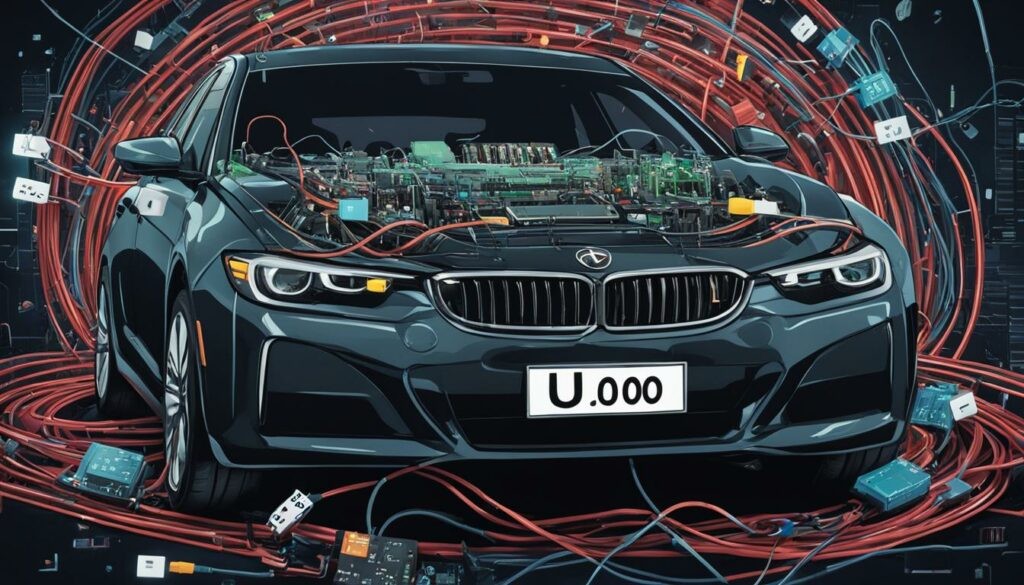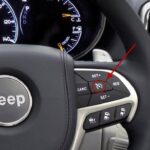The U0100 diagnostic trouble code (DTC), often referred to as “Lost Communication with ECM/PCM ‘A’,” indicates a critical failure in your vehicle’s communication network. This breakdown in communication occurs between the Engine Control Module (ECM) or Powertrain Control Module (PCM) and other crucial modules. Understanding this code is vital for effective diagnosis and repair.
The ECM/PCM acts as the brain of your vehicle, orchestrating essential functions like fuel injection, ignition timing, and emissions control. When communication with other modules is lost, these functions can be severely impacted, leading to drivability problems or even a complete vehicle shutdown.
Decoding the U0100 Code: What Does It Mean?
The U0100 code signifies a disruption in the data flow between the ECM/PCM and other modules in your car’s network. This network, often referred to as the Controller Area Network (CAN) bus, allows various modules to share critical information in real-time. A loss of communication can stem from a variety of issues, impacting the vehicle’s performance and reliability.
Common Causes of ECM/PCM Lost Communication
Several factors can contribute to the dreaded U0100 code. Identifying the root cause is essential for implementing the correct solution. Here are some of the most common culprits:
1. Faulty Wiring and Connectors:
Damaged wiring, corroded connectors, or loose connections can interrupt the flow of data between modules. This is often the easiest issue to fix, but can be challenging to pinpoint.
2. Malfunctioning Modules:
A defective ECM/PCM or other connected module can cause a communication breakdown. Internal faults within these modules can disrupt the sending and receiving of signals.
3. Low Battery Voltage:
Insufficient battery voltage can prevent modules from communicating effectively. A weak battery or a faulty charging system should be ruled out during diagnosis.
4. Blown Fuses:
A blown fuse in the ECM/PCM power supply circuit can completely disable communication. Checking relevant fuses is a crucial early step in the diagnostic process.
Symptoms of ECM/PCM Lost Communication
Recognizing the symptoms of a U0100 code is crucial for early diagnosis and preventing further damage. Common symptoms include:
1. Illuminated Check Engine Light:
The most obvious symptom is a glowing check engine light on your dashboard. This indicates a detected problem within the engine management system.
2. Starting Problems:
The engine may crank but fail to start, or it might not crank at all, due to the ECM/PCM’s inability to coordinate the starting process.
3. Poor Performance:
Rough idling, reduced power, and decreased fuel efficiency can result from the ECM/PCM’s inability to control engine functions optimally.
4. Erratic Transmission Shifting:
If the PCM is affected, you might experience harsh or delayed gear shifts due to communication issues with the transmission control module.
Diagnosing the U0100 Code
Diagnosing Ecm/pcm Lost Communication requires a systematic approach and potentially specialized tools. Here’s a general process:
1. Retrieve Diagnostic Trouble Codes (DTCs):
Use an OBD-II scanner to read the stored DTCs. The U0100 code confirms the communication issue.
2. Visually Inspect Wiring and Connectors:
Carefully examine the wiring harnesses and connectors associated with the ECM/PCM and related modules for any damage, corrosion, or loose connections.
3. Test Battery Voltage:
Ensure the battery voltage is within the specified range. A low voltage can lead to communication errors.
4. Check Fuses:
Inspect the fuses related to the ECM/PCM and communication network for any blown fuses. Replace any blown fuses with the correct amperage rating.
5. Advanced Diagnostics (if needed):
If the issue persists, more advanced diagnostic techniques may be required, such as using an oscilloscope to analyze communication signals on the CAN bus. This often requires professional expertise.
Repairing ECM/PCM Lost Communication
The repair for a U0100 code depends entirely on the diagnosed cause. Solutions range from simple fixes to more complex repairs:
1. Repair or Replace Wiring and Connectors:
Repair damaged wiring, clean corroded connectors, or replace faulty connectors as needed.
2. Replace Faulty Modules:
If a module is determined to be defective, it will need to be replaced and potentially reprogrammed.
3. Address Battery or Charging System Issues:
Replace a weak battery or repair a faulty charging system to ensure adequate voltage for module communication.
Conclusion
The U0100 code, representing ECM/PCM lost communication, is a serious issue that demands prompt attention. Ignoring this problem can lead to significant drivability problems and potentially damage other components. By understanding the causes, symptoms, and diagnostic procedures associated with this code, you can take the necessary steps to resolve the issue and keep your vehicle running smoothly. If you lack the expertise or tools for advanced diagnostics and repair, seeking professional help is highly recommended.


